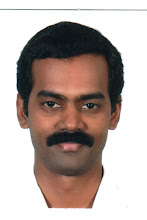

Optical Coherence Tomography (OCT) is emerging as a new rapid acquisition high-resolution imaging modality that provides capabilities for real-time near histologic level evaluation8. In attempting to approach the concept of “optical biopsy”9, OCT offers the potential for surface and subsurface optical imaging (up to a depth of 1-3 mm) with high spatial resolution of tissue microstructure, without requiring contact between the optical probe and the tissue sample 9 10-12. Tissue layers, glands, small blood vessels, and cartilage can be visualized with resolutions approaching 10 micrometers with the use of superluminescent diode (SLD) laser prototype systems 13 14,15. These technologies, in combination with minimally invasive techniques, can be applied in combat casualty care to evaluate and examine tissue depth and level of injury, provide prognostic information, as well as a means to assess response to therapy, and potentially minimize the need for frozen sections or the uncertainties associated with gross examination 16 17 18,19.
OCT uses a broadband near-infrared laser light source in which the emitted light is split into sample and reference beams. The sample beam is directed to the tissue being examined, which is reflected back and combined with the reflected reference beam that has travelled an equal distance from a reference mirror to create an interference pattern (Fig 1). The interference signal of the resultant light wave (a combination of the reflected sample and reference beam) is processed and translated digitally as a gray-scale or false-color map. The reflected signals at different axial tissue depths are determined by the comparison of the internal tissue surface reflected distances and the reference mirror as the mirror distance (delay line) is increased and decreased. The tissue sampling arm probe is then moved laterally, thereby creating a two dimensional image.
A simplified diagram of the OCT system we constructed in our laboratory is shown in figure 2. A low temporal coherence superluminescent diode light source (central wavelength λο = 1300nm, FWHM Δ 80nm; AFC Technologies Hull, Quebec) was connected to a Michelson interferometer which split the light source into the sample and reference beams. These reflected beams were then recombined at the fiber coupler in the interferometer, producing an interference pattern that was detected by a photodiode. Signal processing and data acquisition was accomplished using a computer. Cross sectional images were constructed by repeating the measurements at adjacent lateral points along a sampling line. Axial line scan frequency was 500 Hz. Imaging depth was approximately 1~2 mm. Since the OCT light source is not visible, an aiming beam (laser diode with λ=650nm) was coupled to the system to elucidate the exact location of the sampling site.

